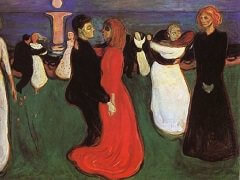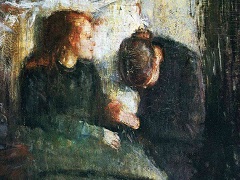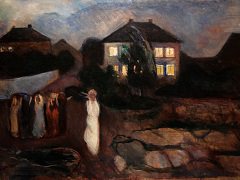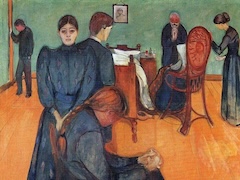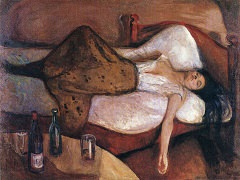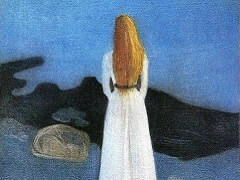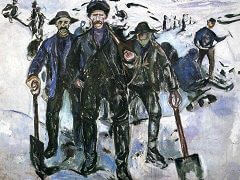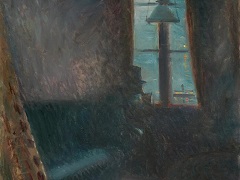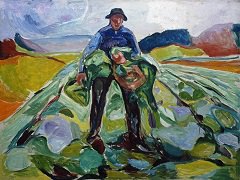Galloping Horse, 1912 by Edvard Munch

A horse-drawn sleigh speeds down a narrow, wintry road - the same hollow passage that Munch uses so consistently as a symbol of confinement. Two men and two girls, in characteristic separation from each other, stand aside in helpless passivity or cling, terror stricken, to the surrounding rocks. The smallish figure of the driver contrasts with the powerful hulk of the animal, as if to stress the frailty of the rational component in relation to overpowering elemental forces. The focus of this work, however, is the horse's large, panic-filled eye, turned toward us in mute terror.
Symbolic color strengthens the anxiety theme that Munch here transfers to a new context. Brown, heightened toward red, ever associated in Munch's work with sanguinary animality, contrasts with the cool blueness of guiding man. The frightened girls cling to their green safety, which forms a color oasis among the cold white and blue of snow and rocks that depict the solid, tactile reality of the Kragero landscape.
Galloping Horse is also the subject of one of Munch's finest later etchings. As in earlier times, the artist returns to the print medium to repeat in simplified form a theme originally executed on canvas. Apart from the reversal through the printing process, the subject remains unaltered. Every detail of the original version is accounted for in the print completed three years later. The effect of intensification is achieved through subtle adjustments in scale which increase the contrast between horse and rider by confining the speeding animal within a reduced space.
Set in new landscape, Galloping Horse also alters the nature of Munch's symbolic content. Instead of centering on the grand love and death themes of the Frieze, the work hints at the tensions between uncontrollable urges and rational restraints - a polarity that for the recently recovered artist must have had more than allegorical significance.



